Related Tags
Gretsch Jim Dandy Dread review – is this really the best cheap acoustic guitar you can buy right now?
With 1930s looks and an impressive pedigree, Gretsch’s biggest Jim Dandy yet is making a strong play for the entry-level acoustic crown.
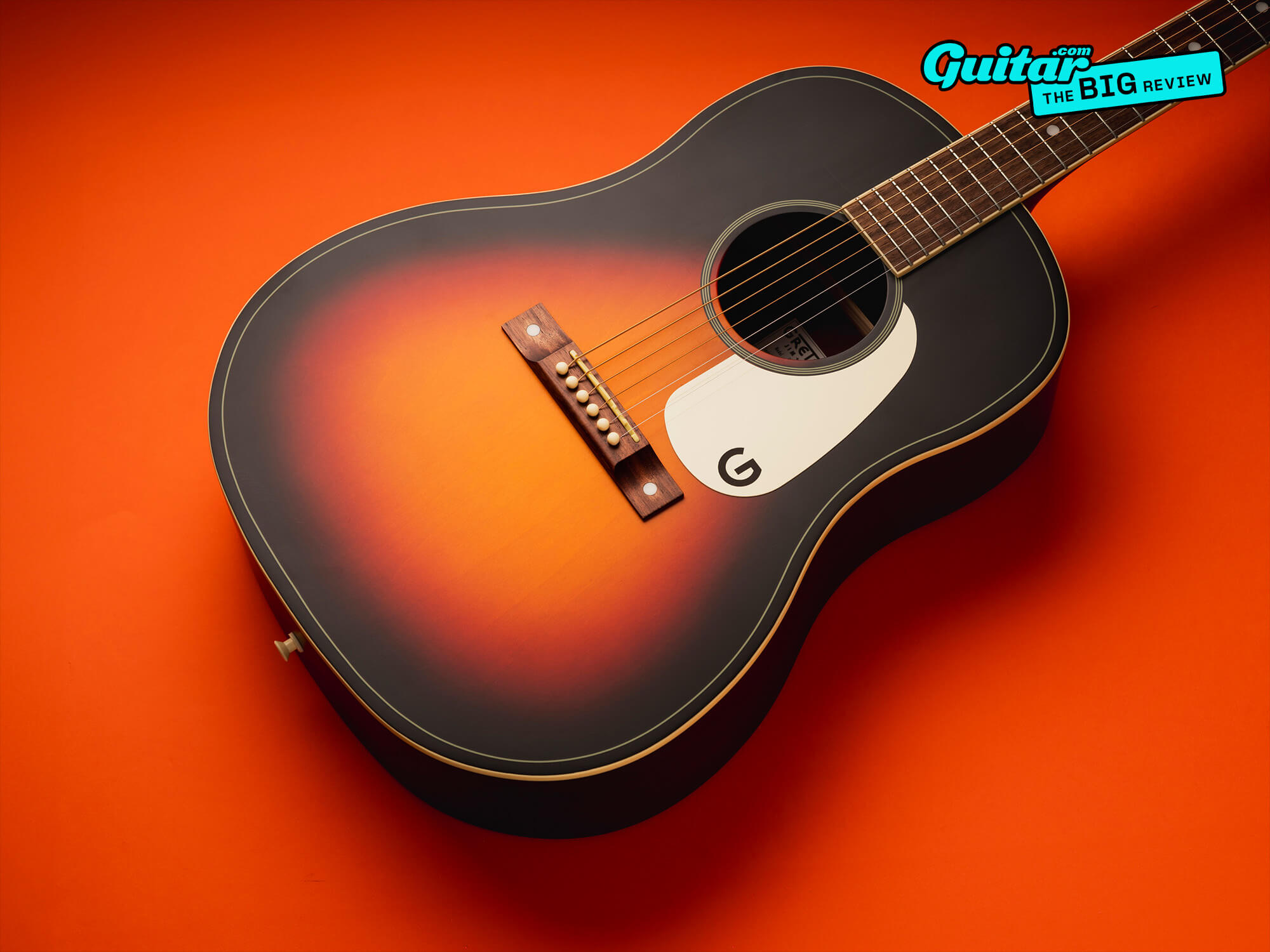
Image: Adam Gasson/Guitar.com
Review Overview
Our rating
8
Our verdict
$189/£189, gretschguitars.com
The Jim Dandy line has been an interesting side hustle for Gretsch. For most of the last two or three decades, it’s felt like the modern Gretsch company was wrestling with what to do with its acoustic guitars. For a brand so heavily steeped in archtop heritage, it doesn’t quite have the pedigree when it comes to flat-tops, and that was apparent in the stop-start nature of its productions of guitars like the Nightbird and reimaginings of the distinctive Rancher design, and the limited success those models enjoyed.
First released in 2013, the original Jim Dandy was a definite departure from the traditional Gretsch script, inspired as it was by the Rex-branded catalogue guitars that were produced by Gretsch in the 1920s and 30s. The original Jim Dandy was cheap, but a lot more than cheerful – with undeniably cool looks, impressive build and authentic old-school parlor guitar sound, they were genuinely good instruments that even found professional admirers in the shape of Eric Bibb, Daniel Johns, Megan Lovell and of all people, Buzz Osbourne.
Over the following decade, Gretsch has expanded and evolved the Jim Dandy range with different body styles and finishes, and even the addition of a series of suitably 1930s-inspired electric pickups to add to the guitar’s utility. What they’ve not done before however, is go big – and that’s where this Jim Dandy Dred comes in.
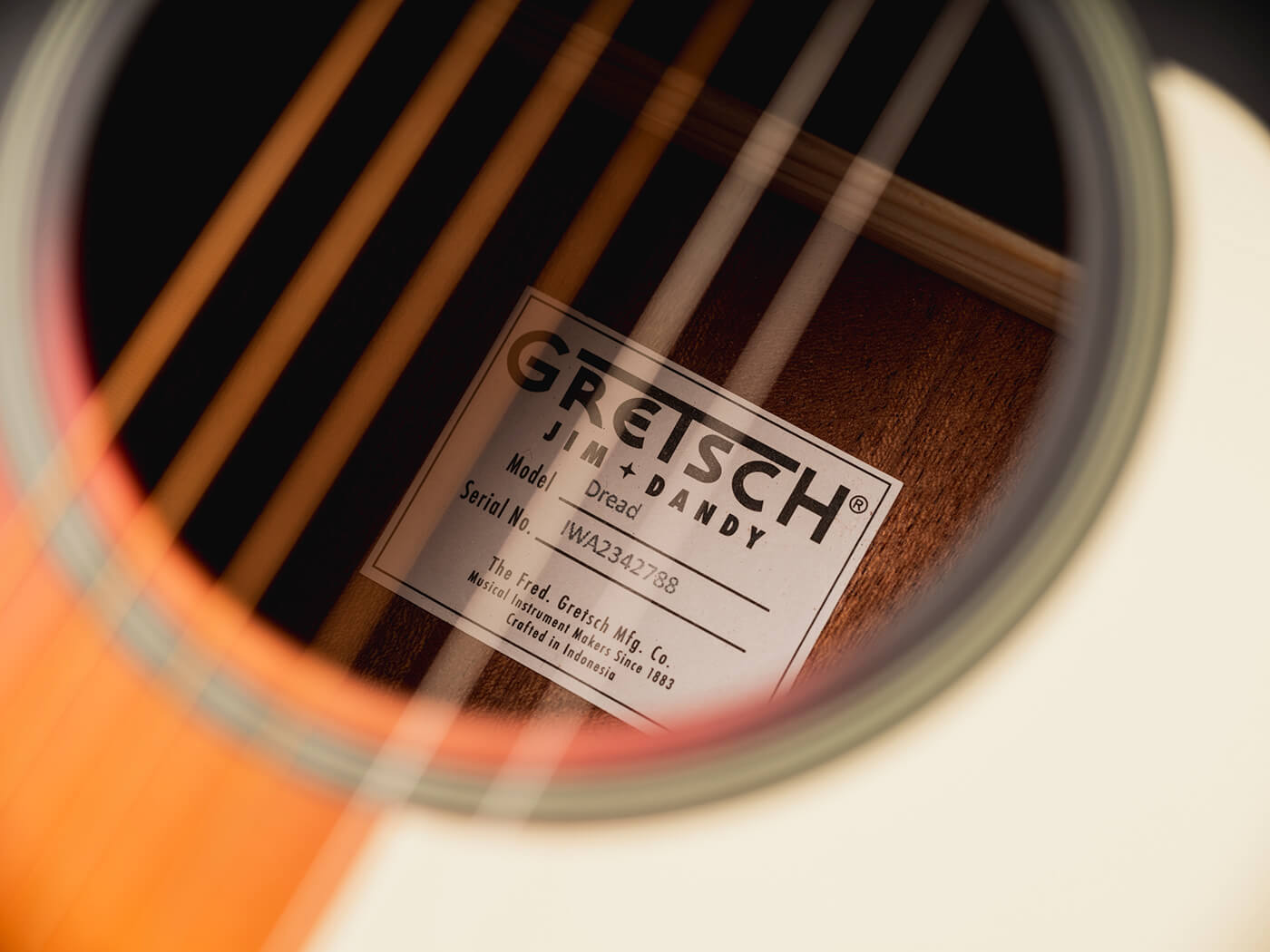
Why is the Gretsch Jim Dandy Dread so cheap?
If you’re looking at the price tag up top and wondering just how this guitar costs south of $200 bucks, well a glance at the spec sheet goes some way to explaining it – you won’t find a whole lot of solid wood on this guitar thanks to its laminated basswood top back and sides, and we’re hitting all the budget wood boxes with a nato neck and walnut bridge and fingerboard.
There’s also no electronics in this model, though if you wanted to add some sort of soundhole pickup, there’s a strap button on the heel that should minimise the amount of drilling you’ll need to do.
Elsewhere you’ll find some common bits of hardware with the original Jim Dandy (recently rechristened the Jim Dandy Parlor), including the three-in-line vintage-style tuners and the parchment-colour ‘G’ pickguard.

There’s no doubt that the ‘semi-gloss’ (read satin) finish to the guitar is probably saving Gretsch a bit of money too, though it’s also entirely appropriate for the Depression-era vibe of this guitar – it suits the guitar’s handsome ‘Rex burst’ top and black back sides and neck perfectly. While the above might explain why this guitar is as cheap as it is, however, we shouldn’t lose sight of the fact that it remains an exceptional bargain, as I’ll try to explain below.
Interestingly, the bridge on all Jim Dandy guitars has now been swapped from a top-loading design to a traditional bridge pin situation – something that opens up the potential to swap these out for different/higher quality options if that’s something you have strong feelings about.
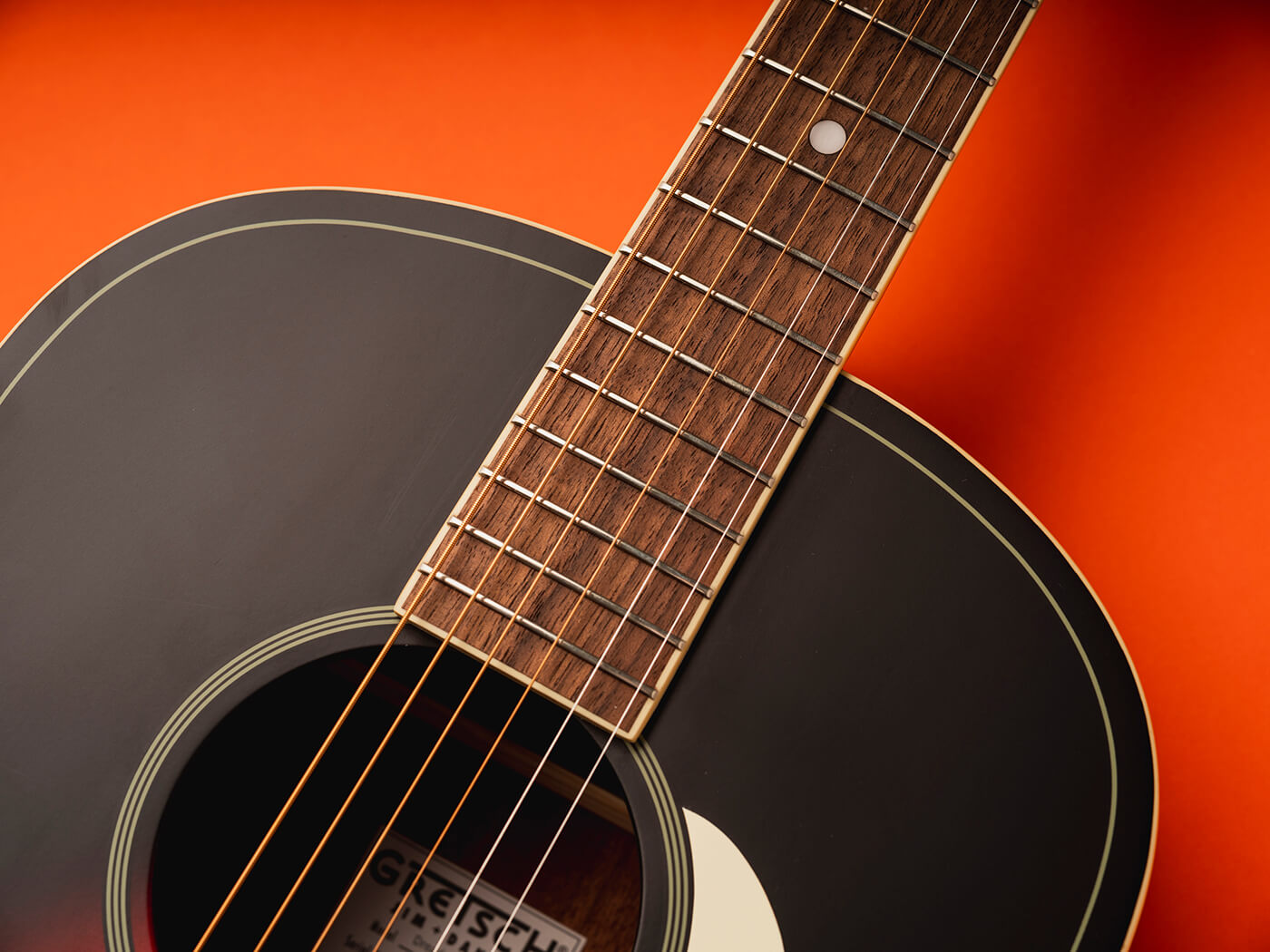
Is the Gretsch Jim Dandy Dred easy to play?
Before we get into the playability of the Dread, a word about that nomenclature. Compared to the bijou Parlor and Concert guitars in the Jim Dandy range, this guitar certainly feels more like a dreadnought, but anyone expecting capital D dread might be somewhat nonplussed – with a length just over 19” and a width just shy of 15 in the bottom bout, it’s closer to an OM or 000 in profile, with a body depth of 4.3” sitting somewhere between a 4.1” 000 and a D-18’s 4.8”.
This compact feel is aided by the guitar’s wonderfully elegant sloped shoulders, giving it the look and feel of a J-45 that’s holding its breath to look more svelte in its prom photo. The sense that this is a dread for people who find dreads a bit too big is continued with the neck – while a D-18 would usually have a 25.4” scale length, here we have a Gibson-esque 24.75” scale, and 20 vintage-style frets, with the glued-in neck joining the body at the 14th fret.
Despite its bigger size, the Dread also sports a nut width that’s actually a little wider than the original Jim Dandy – moving to 42.7 from 43mm – which makes the C-shaped neck and 12” radius fingerboard a little more comfortable in the hand.
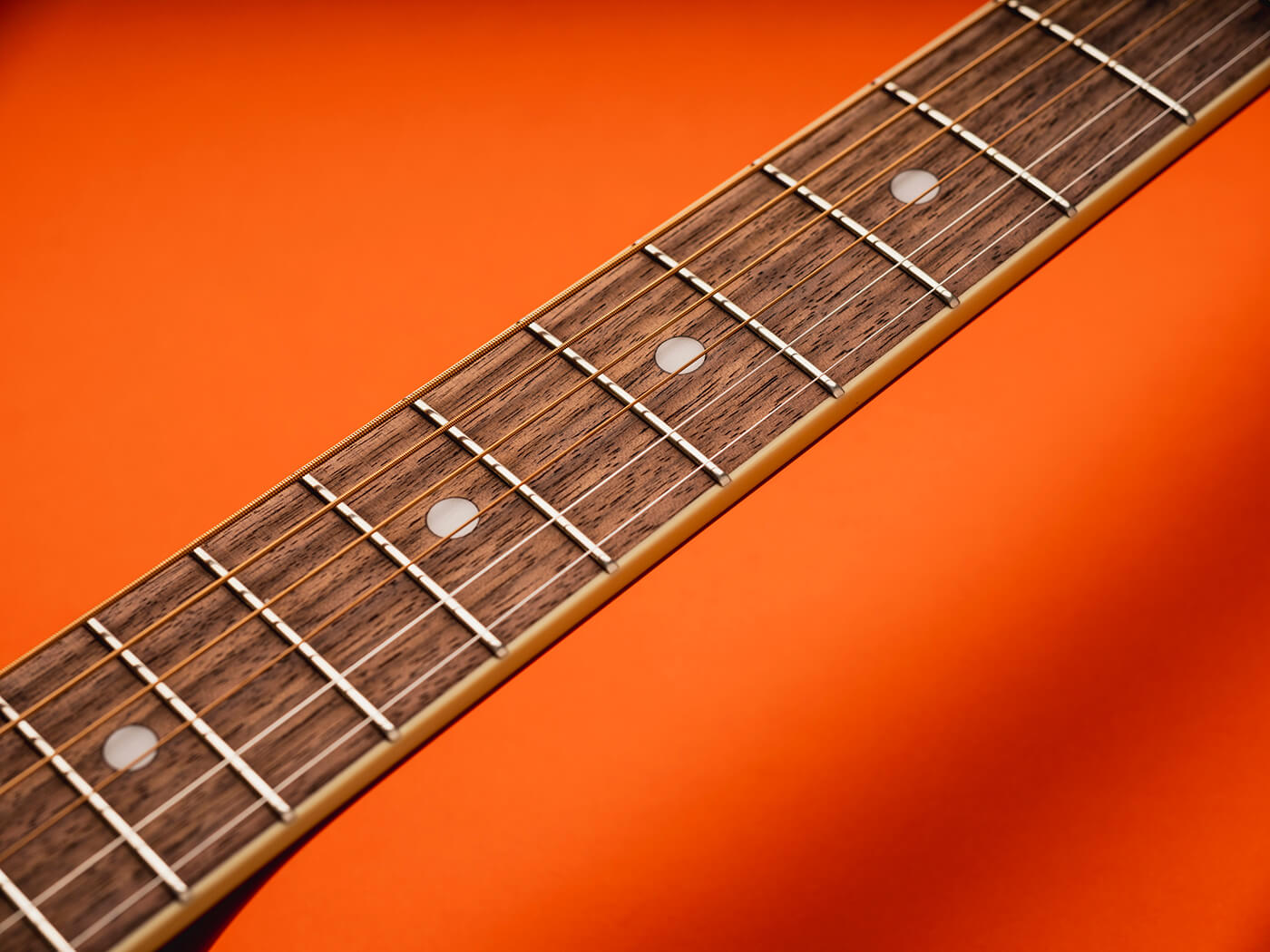
One of the most impressive aspects of the original Jim Dandy – and a big part of why it was such a lovely guitar to play – was the fretwork, and it’s really reassuring to see that trend continue here. The vintage-style frets are nicely polished and even, and the edges are impressively rolled into the plastic binding, making sure there are no sharp edges as you move up the neck.
The cumulative effect of all this is an accessible compact player that invites gentle strumming of cowboy chords and fingerpicked first-position numbers. If you wanted to venture further up the board the 14-fret body join is somewhat accommodating in that regard, but it’s best to think of this guitar as a picker and strummer.
Does the Gretsch Jim Dandy Dred sound good?
Another notable aspect of the original Jim Dandy guitar was that it didn’t just look like a well-loved old Depression-era parlor guitar, it sounded like one too – with Delta vibes aplenty. There’s something of that about this Dread version, and I’d consider it in those terms rather than as a true dreadnought – you’re not going to get the projection of a D-18 here of course, but even compared to an all-solid Sigma it’s probably lacking in the warmth and rounded tone experienced players will expect. It is also worth remembering that said all-solid Sigma dread will still set you back more than double what this guitar streets for.
Instead of a bona fide dreadnought then, this is effectively a Jim Dandy Plus – it has the same balanced but slightly reedy acoustic tonality as its smaller siblings, just a bit bigger and with a more pronounced bottom end. That does mean it can sound a little piercing on the unwound strings at times, but for picked chords and gentle campfire strumalongs it has a nice balance of projection and clarity that beginner guitarists will appreciate.
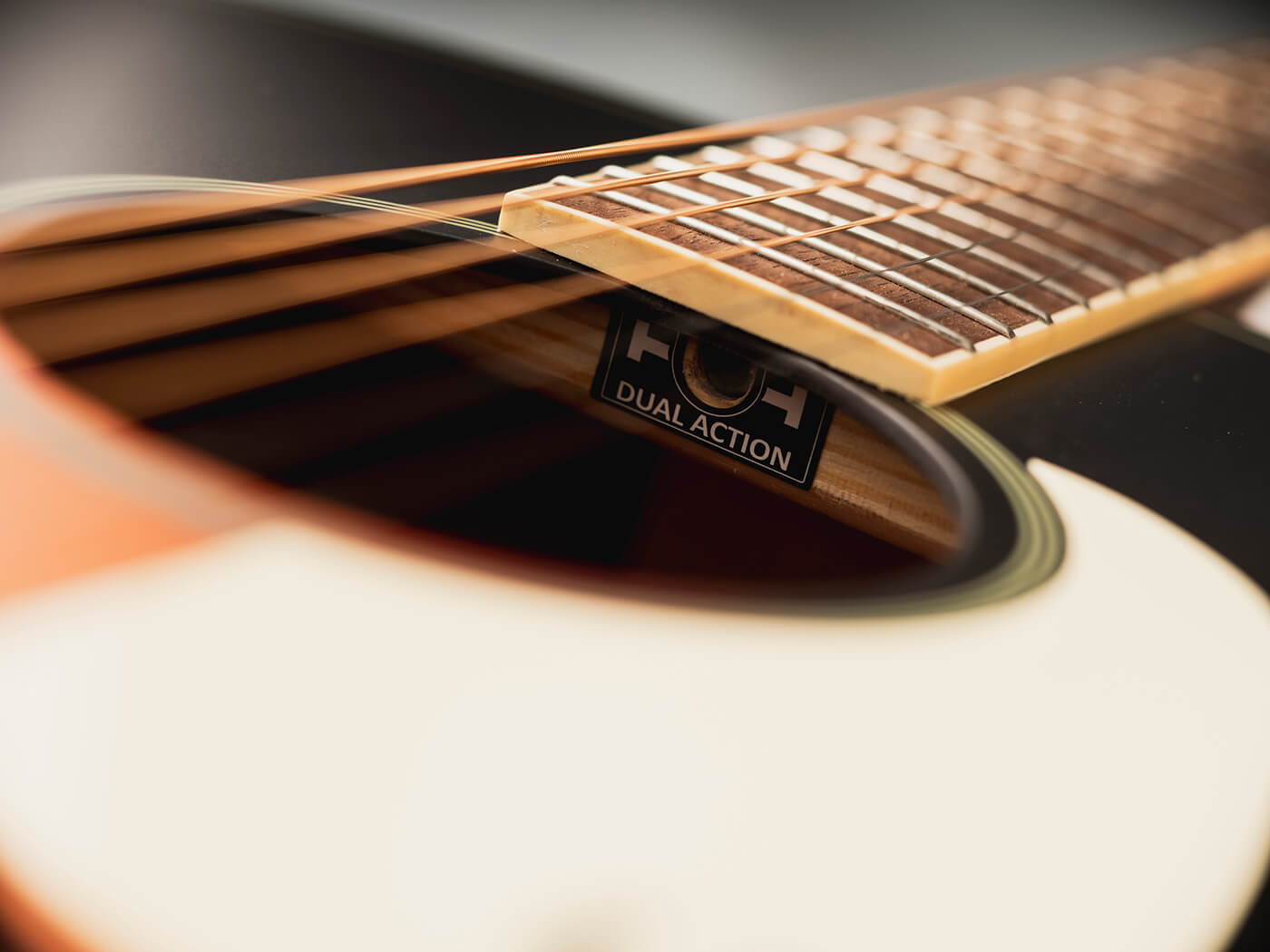
Is the Gretsch Jim Dandy Dred the best value acoustic guitar?
As a seasoned player, especially someone who has played his share of vintage Martins and Gibsons, and high-end acoustics of many wonderful kinds, it’s tempting to damn this guitar for its slightly underwhelming sonic performance – I started writing that very paragraph before I took a glance at the top of this article and remembered what sort of people are likely to be buying this instrument.
If you’re looking for a truly great-sounding budget instrument that can be your companion for decades and will only sound better the older it gets, well the aforementioned all-solid Sigmas and Yamahas are not hard to find. You’ll also need to basically double your budget.
For beginners who are looking for the best possible acoustic experience for the least amount of money however, the Jim Dandy Dread might be the best option out there. The sound is perfectly nice for playing at home or for unamplified gigs, it’s got one of the best playing and feeling necks of any budget guitar and frankly, look at the damn thing. It looks cooler than some guitars that cost 10 times the price, and would be an amazing companion as you started your journey into the wonderful world of music.
Gretsch Jim Dandy Dread alternatives
From the same FMIC stable (and likely from the same factory) comes the similarly affordable Fender CD-60S Dreadnought ($199/£189) – go for the all-mahogany version and you’ll even get a solid top. Yamaha is always a power player at this price point, and the Tobacco Brown Sunburst FG830 (the $349/£499 favouring the US market here) offers similar old-school vibes with a solid spruce top. Eastman’s acoustics are also very good at this price point, and the PCH1-D ($349/£329) features a ‘Thermo-Cured’ top for aged looks and feel.
